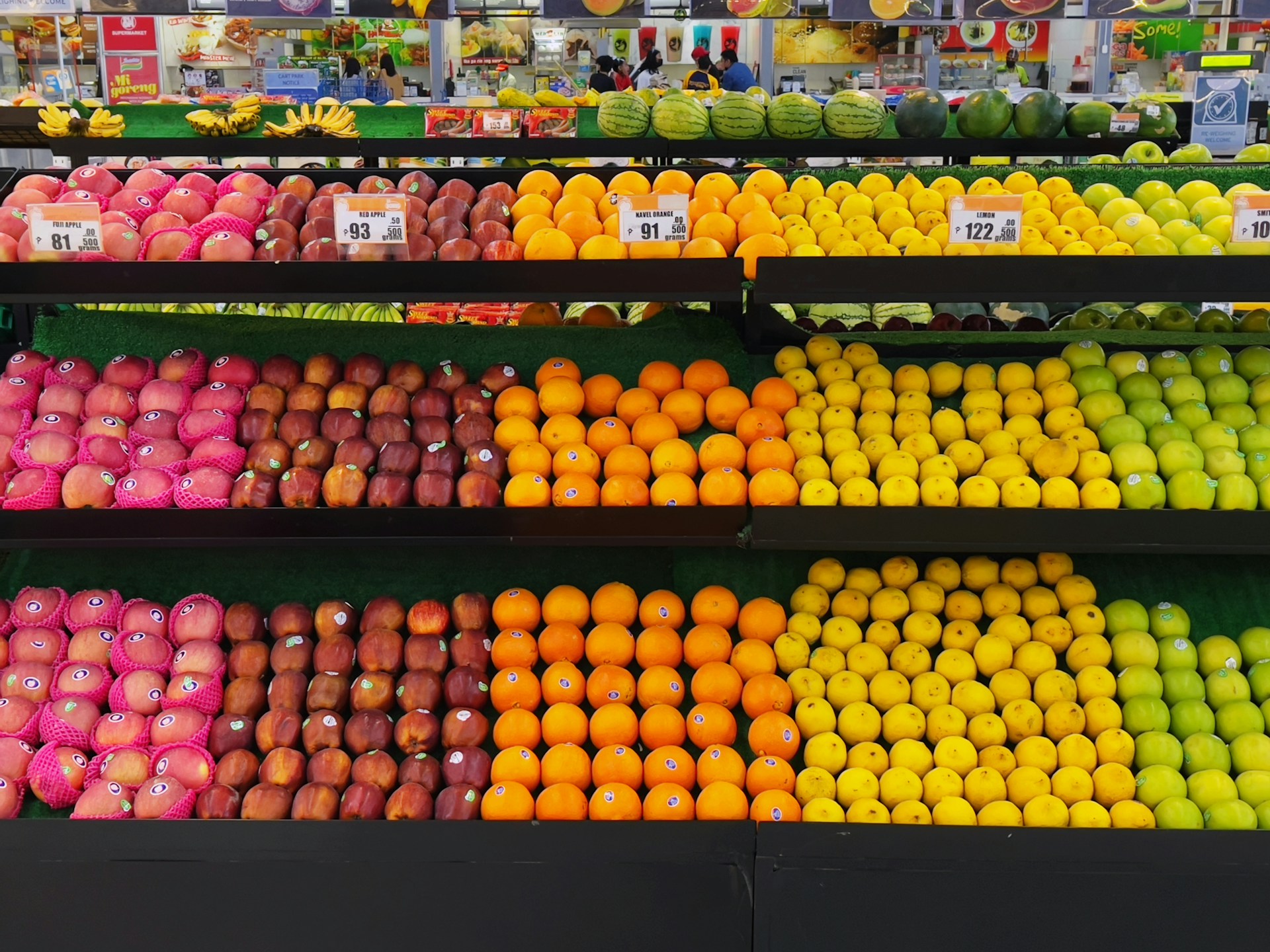Efficiently transporting fruits and vegetables from the farm to the consumer’s plate is a critical aspect of the agriculture industry.
However, it can be a complex operation that often gets overlooked.
Today, let’s delve into some cutting-edge methodologies to enhance these processes.
These strategies not only ensure the quality and freshness of produce, but also optimize cost, time, and energy consumption.
From farm to fork, these innovative solutions encompass every step of distribution.
This article will unravel strategic ways for boosting the effectiveness of produce distribution.
Advanced Logistics Strategies For Produce Distribution
1. Implement cross-docking for quicker merchandise delivery
For most businesses in the produce industry, quick merchandise delivery is of utmost necessity. Having slow delivery protocols is detrimental to the freshness and overall quality of the produce.
This is hence where implementing cross-docking comes in play.
Essentially, cross-docking is a practice in logistics of unloading materials from an incoming semi-trailer truck or rail car and loading these materials directly into outbound trucks, trailers, or rail cars, with minimal to no storage in between.
This strategy reduces handling costs, operating costs, and the storage of inventory.
When applied to produce distribution, it means that the goods are kept moving, thereby reducing any storage time that could potentially degrade the quality of the produce.
By streamlining the movement from the point of origin to the point of sale, cross-docking ensures that the produce is as fresh as possible when reaching the customer.
But cross-docking is not just about speed; it’s also about efficiency and simplification.
When cross-docking is effectively implemented, it eliminates the need for warehouses to store produce which, as we know in the produce industry, can be both expensive and risky.
If a single batch of produce gets spoiled, it could impact the entire stored inventory, leading to huge losses.
Through cross-docking, this risk is significantly reduced.
Besides, the approach also promotes efficiency in your logistics operations.
With its emphasis on speedy delivery and minimal downtime, you are less likely to encounter logistical bottlenecks or delays that could disrupt your distribution plans.
Despite the many benefits however, it’s crucial to remember that cross-docking isn’t suitable for every produce distributor.
Implementing it requires a high level of coordination and the ability to match supply with demand, amongst other logistical challenges.
But for those that can effectively integrate cross-docking into their operations, the potential rewards in terms of increased speed, improved freshness, and enhanced operational efficiency are immense.
2. Utilize cold chain logistics for temperature-sensitive produce
In the field of produce distribution, a key strategy for maintaining quality and freshness is the use of cold chain logistics.
This method employs temperature-controlled supply chains, with the goal of ensuring that temperature-sensitive produce remains fresh from the moment it is harvested until it reaches the consumer’s hands.
Cold chain logistics is an effective solution to maintain the quality and longevity of perishable food products during transport.
It involves a seamless series of refrigeration, cold storage, and distribution activities, all coordinated to maintain a temperature range that will keep produce at its optimum freshness.
This process serves to minimize risk that can impact the integrity of the temperature-sensitive produce.
Implementing cold chain logistics in your distribution strategies is crucial as it not only improves the shelf life of your produce but also helps to maintain nutritional value.
The use of specialised packaging and refrigerated transport plays a significant role in successful cold chain logistics.
To optimise this strategy, it is necessary to implement real-time monitoring solutions that can track temperature conditions along with the supply chain.
Such monitoring solutions can alert operators to any fluctuations or breaches in temperature, allowing for rapid problem resolution and minimising loss.
Training staff in the correct handling and protocols for cold chain logistics is also imperative to ensure that the system works smoothly and effectively.
Furthermore, documentation of temperature controls and processes is needed for regulations and for demonstrating accountability in the event of a problem.
To summarize, the strategy of implementing cold chain logistics in your produce distribution chain provides a way to maintain quality and freshness of produce during its journey from farm to table.
It requires investment in technology, resources, and training, but ultimately, it can lead to improved customer satisfaction through the delivery of fresher, higher quality produce.
In the end, cold chain logistics can give your produce distribution operations a competitive edge in terms of product quality, reliability and safety.
3. Employ Real-Time Inventory Management Systems
In today’s dynamic market, the ability to accurately track inventory in real time is crucial to the successful operations of any business, more so in the produce distribution industry.
This is because the life span of the goods in question, fresh produce, is limited and therefore demands careful and timely handling. A real-time inventory management system plays a pivotal role in ensuring the timely movement of goods.
By using a real-time inventory management system, companies can monitor the status of their inventory at all times. This visibility equips them with the information necessary to make well-informed decisions about procurement, warehousing, distribution, and sales.
One could say real-time inventory management is an advanced logistics strategy that caters to the unique needs of fresh produce distribution. It assumes an important role in not only keeping track of the products in storage but also the products that are on their way to the market.
Real-time inventory management is a proactive approach that allows firms to stay on top of their stock levels and movement, reducing waste, and optimizing the supply chain.
By nature, fresh produce is prone to spoiling. Therefore, an efficient inventory management system can help identify slow-moving items and integrate this information with sales predictions to plan more effectively.
Such a system also ensures that goods are not overstocked or understocked, thus avoiding wastage or missed sales opportunities respectively.
Furthermore, real-time inventory management reduces the amount of time spent on manual counts, freeing up time for staff to focus on other important tasks.
Looking at its implementation, firms can integrate real-time inventory management with other operational systems such as purchase, sales, and logistics. This integration creates a synergized ecosystem that streamlines operations.
Real-time inventory management systems are available in software as a service (SaaS) model, which allows firms to customize the software to best fit their operational requirements. This model also reduces the need for intensive capital expenditure in IT infrastructure.
The data collected by such systems can be used to review and improve operational procedures, leading to a more efficient supply chain.
With various technological advancements like machine learning and artificial intelligence, real-time inventory management systems are becoming even more refined. They can now predict demand and adjust inventory levels accordingly.
These systems can act as an early warning mechanism in situations where there is a sudden surge or drop in demand for a particular product. The ability to react promptly to these changes serves as a competitive edge for fresh produce distributors.
The journey towards achieving a truly real-time inventory management system may seem daunting. However, the payoff in the form of an efficient, dynamic, and robust supply chain is definitely worth the investment.
Thus, real-time inventory management aligns with the goals of a modern-day fresh produce distributor – effectively managing inventory while pursuing customer satisfaction.
Embracing this advanced logistics strategy is a stepping stone towards achieving operational efficiency and market leadership in the fresh produce distribution sector.
4. Use just-in-time delivery to minimize spoilage
When dealing with highly perishable produce, every second counts, thus, just-in-time delivery can be a significant game-changer.
Just-in-time (JIT) is a production strategy widely utilized in various industries where goods are produced to meet demand, not created in surplus or in advance of need.
The use of JIT in the context of produce distribution means that the products are harvested, packed, and transported just in time to be sold.
This method minimizes the amount of time produce spends in storage, thereby helping to substantially decrease spoilage.
Moreover, it’s worth pointing out that JIT delivery necessitates a precise and well-coordinated logistics operation.
Implementing JIT within the produce distribution strategy requires a comprehensive understanding of the entire supply chain, from field to fork.
Close communication with farmers, distributors, and retailers is essential to ensure the success of JIT deliveries.
Real-time data analysis plays a crucial role in predicting demand and thus aiding in successful JIT implementation.
Using technology applications for demand forecasting leverages the chances of efficient supply and limits the instances of surplus or shortage, helping to implement JIT more effectively.
To reap the full benefits of JIT delivery, companies should invest in advanced logistics tools like real-time tracking, AI, and Machine Learning.
These tools provide the necessary visibility throughout the supply chain and allow for smarter decision-making.
Furthermore, while JIT significantly cuts on waste, it can be a double-edged sword if not effectively managed.
One potential setback lies in the risk of underproduction if the demand predictions aren’t accurate; nevertheless, with precise forecasting, and efficient logistics, the chances of such occurrences are significantly reduced.
Briefly, JIT is an effective logistics strategy that, when properly implemented, can bring about considerable improvements in produce distribution.
It significantly reduces storage time and optimizes transportation, leading to minimized spoilage and maximized freshness of the produce.
In the end, it all boils down to a well-coordinated ecosystem of farmers, distributors, retailers, and advanced logistics tools all working in perfect harmony for an efficient and effective produce distribution network.
5. Invest in IoT for Efficient Fleet Management
The role of Internet of Things (IoT) in fleet management, particularly in the context of produce distribution, cannot be overstated.
IoT provides an array of opportunities for improving efficiency and effectiveness in managing logistics, especially for perishable goods.
By investing in IoT, companies can bolster their capacity to deliver fresh produce in a timely and cost-effective manner.
IoT enables real-time tracking of vehicles, allowing companies to monitor and manage their fleets more efficiently.
This includes tracking the location of vehicles, assessing route efficiency, monitoring vehicle maintenance needs, and even controlling internal truck temperatures to ensure optimal conditions for the produce.
By ensuring that the fleet is well-maintained and optimally used, companies can deliver fresh produce more efficiently and at a lower cost.
Moreover, the data collected through IoT can be used to enhance decision-making processes around scheduling, routing, and load optimization.
The IoT integration also allows for predictive analytics, enabling companies to anticipate and address potential logistical problems before they occur thereby reducing waste and spoilage.
A modern IoT system equipped with machine learning capabilities can learn from past data, identify patterns, and make recommendations to optimize future operations.
Furthermore, IoT can provide valuable insights about the quality of the produce being transported by monitoring parameters such as temperature, humidity, and vibration levels.
Such data allows for more precise quality control, helping to prevent spoilage and ensuring that only the highest quality produce reaches consumers.
Given the increasing consumer demand for high-quality fresh produce, investing in IoT for fleet management can give companies a competitive edge.
Naturally, investing in IoT also means investing in the necessary IT infrastructure and employee training to effectively use and manage the new systems.
Despite the initial cost, the long-term benefits of improved efficiency, cost saving, and higher customer satisfaction make an investment in IoT a worthwhile strategic decision for companies involved in produce distribution.
The Bottom Line
Ultimately, the modern logistics industry demands innovative solutions to keep up with the challenges of a rapidly expanding and ever-demanding consumer market.
Implementing cross-docking can expedite merchandise deliveries, while the use of cold chain logistics ensures the freshness and quality of temperature-sensitive produce.
The incorporation of real-time inventory management systems assists in preventing stockouts and overstocks, giving businesses the upper hand in the competitive market.
Additionally, adopting the ‘just-in-time’ delivery concept can significantly minimize product spoilage, further reducing costs.
Investing in Internet of Things (IoT) tech for fleet management can lead to further efficiencies, enabling real-time tracking, cost reduction, and improved service.
Embracing these strategies could undoubtedly steer a logistics enterprise towards achieving greater market success and improved customer satisfaction.




